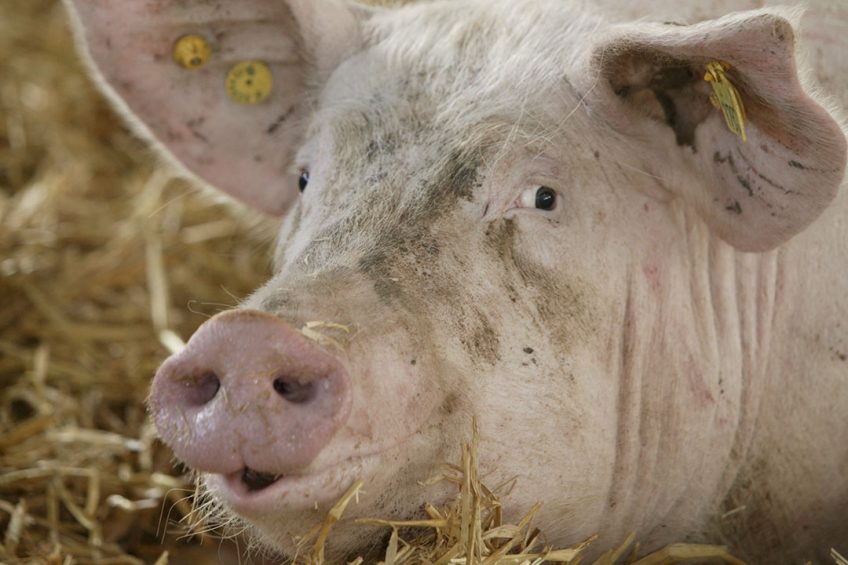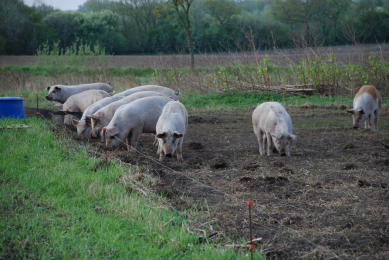“Triple-action vaccine improves convenience and sow welfare”

Combination vaccines are increasingly gaining ground in the international pig business as options and possibilities expand rapidly. Recently, leptospirosis protection was added to an already existing sow vaccine cocktail: one shot to protect them all.
Last month, MSD Animal Health launched its vaccine Porcilis Ery+Parvo+Lepto, the latest addition to the Porcilis range of vaccines. The vaccine, to be administered to sows and gilts in early gestation, offers simultaneous protection against erysipelas, parvovirus and leptospirosis. For the latter health problem, no prior vaccine existed within the company’s range in the European Union.
Research carried out in the Netherlands
Most of the research for this vaccine was done from Boxmeer, the Netherlands, explains Dr Ruud Segers, global head of swine biologics R&D. In an interview with Pig Progress, Dr Segers says, “For me personally it is special as I obtained my PhD on a study of leptospirosis. It is joyful to see that all come together now.”
Pig Progress: What does the novel vaccine look like?
Dr Ruud Segers: “It is a complex vaccine as it consists of 8 antigens. The vaccine consists of 3 vaccine components, being erysipelas, parvovirus and leptospirosis. ‘Parvo’ and ‘Lepto’ are intended to protect the foetuses. During gestation, parvovirus and leptospirosis can affect the foetuses, leading to the birth of weaker piglets. The vaccine against erysipelas is intended to protect the sow.”
Why is it essential to have exactly these 3 vaccines combined?
“For convenience reasons: after a basic 2-dose vaccination at the first gestation, a swine farmer only has to vaccinate once at the start of every other round of gestation for full protection against parvo and leptospira infections, and with ‘Porcilis Ery’ at the intermediate gestations. All-in all, it means that producers do not have to bother their sows and gilts as much – and thus it is also more animal friendly.”
A mixture of bacterial and virus vaccines – does that work together?
“A part of this vaccine had already been existing longer, including the ‘Ery’ + ‘Parvo’ parts. So that already was a bacterial and a viral combination. Effectivity has been proven. It’s the adjuvant that makes it all work, one that is safe and efficient.”
Why is it important to have leptospirosis added to the vaccine?
“Leptospirosis is an ubiquitous, underdiagnosed and underestimated zoonotic disease that can result in significant reproductive problems in sows. Depending on the time of infection during pregnancy, the clinical symptoms vary from foetal autolysis or mummification to early abortions, stillbirths and/or weak piglets. We were able to demonstrate that and also showed that our new vaccine could protect against such reproductive problems related to serovar Pomona infection both in contained studies as well as in a field situation in Portugal.
“Further, leptospirosis is caused by multiple Leptospira species and the new vaccine contains the antigens that cover all of the variants that are considered relevant for swine in the field.”

Read more about pig health in the Pig Progress Health Tool
Is it MSD’s 1st triple-action vaccine to hit the market?
“That depends how you look at it. We also have an E. coli + Clostridial vaccine, which offers protection against a range of E. coli and Clostridia strains. In fact, the current vaccine consists of 8 different strains. Each bacterium consists of various serogroups, and it is known that in Leptospira there is hardly any cross-protection between the serogroups. Within the serogroups, there are different serovars, and at this level there is cross-protection. The current vaccine therefore contains 8 antigens, of which 6 are against Leptospira serogroups and the other 2 against erysipelas and parvovirus.”
Combining vaccines – is that the future of ensuring animal health?
“Yes. Convenience as well as animal welfare are helped if we can reduce the amount of times an animal needs to be vaccinated. Depending on the time and moment of vaccinating, we are developing ready-to-use combinations as well as possibilities for customers to combine vaccines and antigens.”
Does that mean that the triple-action vaccine will be expanded too?
“We are still working on that, but yes, in the future further developments can be expected.”
Why is it important to address these health issues while the outside world is screaming for solutions for e.g. PRRS and African Swine Fever?
“Of course we work on diseases that bring crisis to the pig world, but irrespective of that, any good business starts with a healthy sow herd, and the new vaccine fits into that. We currently have a portfolio of 18 vaccines within the Porcilis portfolio and there is more in the pipeline. It is just important to get those basics right. And it’s good to remember that vaccinating alone is not the answer either – if the hygiene is not optimal, vaccination alone will not solve all problems.”

Read also: Prevention is better than a cure
Is the vaccine available all over the world as from today?
“We start off with Europe, as that is where the registration has been completed, followed by Latin America and Asia.”
Last but not least, how much work has gone into the development of this new vaccine?
“A lot of people do not realise how big a team is needed to have a vaccine of this size developed. Most work for this virus has been done by 2 teams, in total 30 persons. The first one, run by Erwin van den Born, zoomed in on parvovirus and the second, headed by Ton Jacobs, focused on the 2 bacterial vaccines. Also included were e.g. the animal services department for the trials and let’s not forget regulatory affairs, our manufacturing departments and quality control. It has been a multi-disciplinary effort.”











